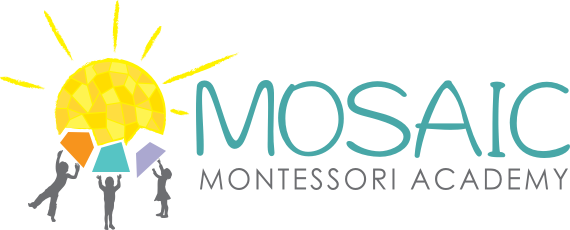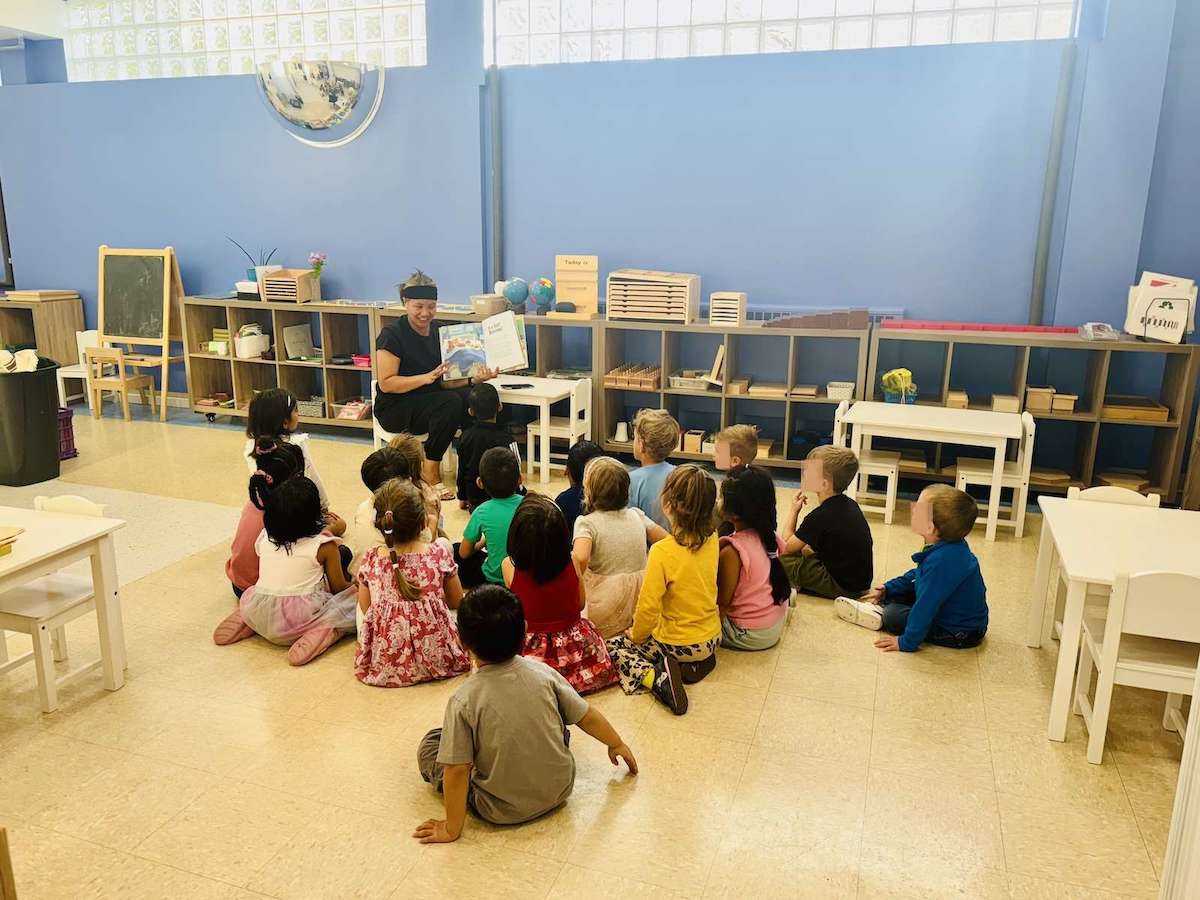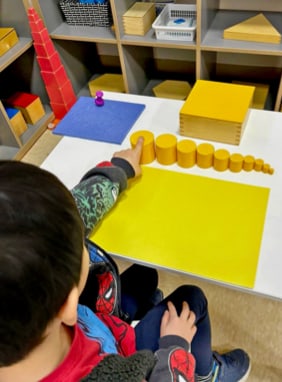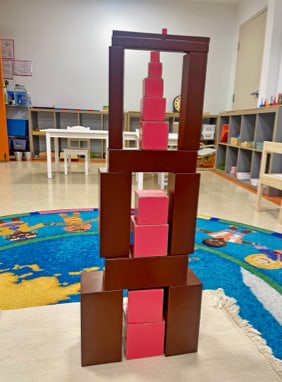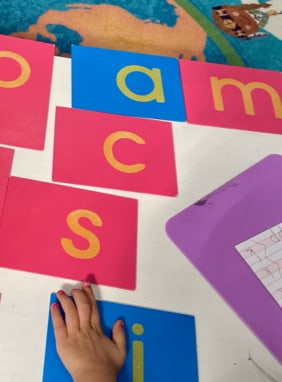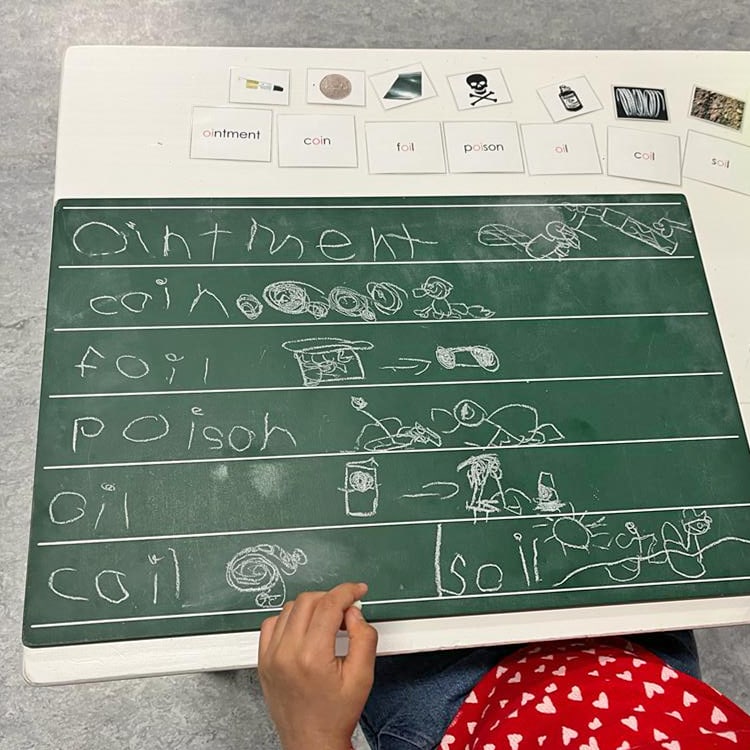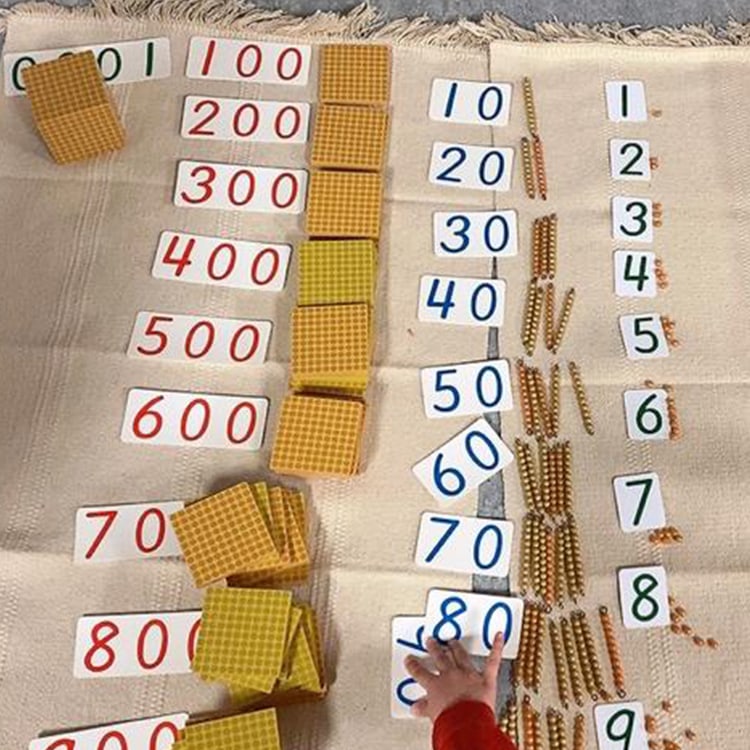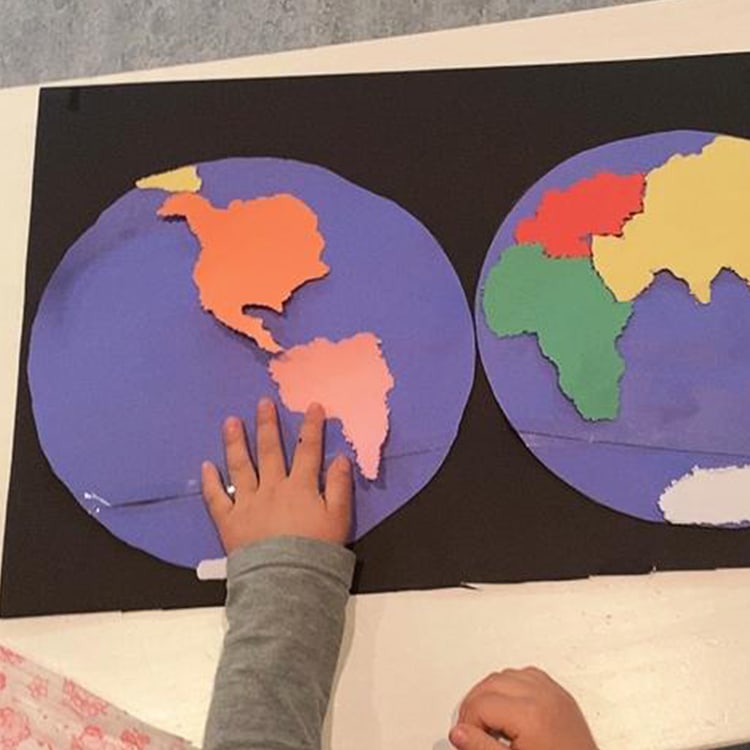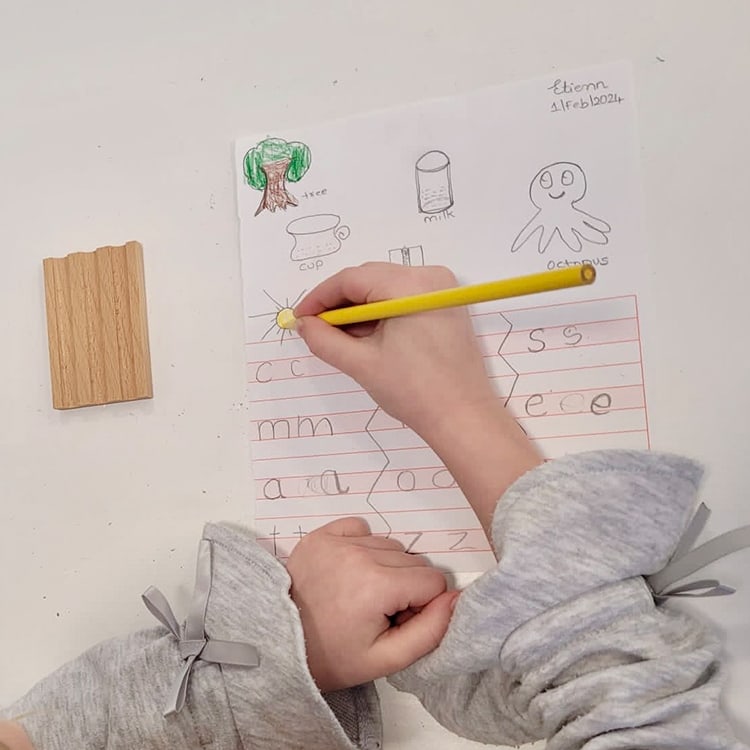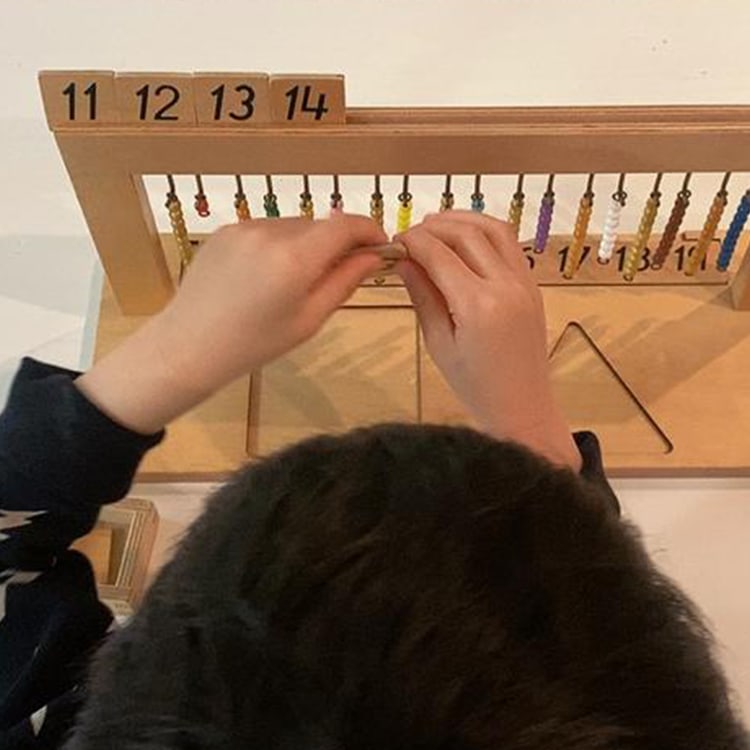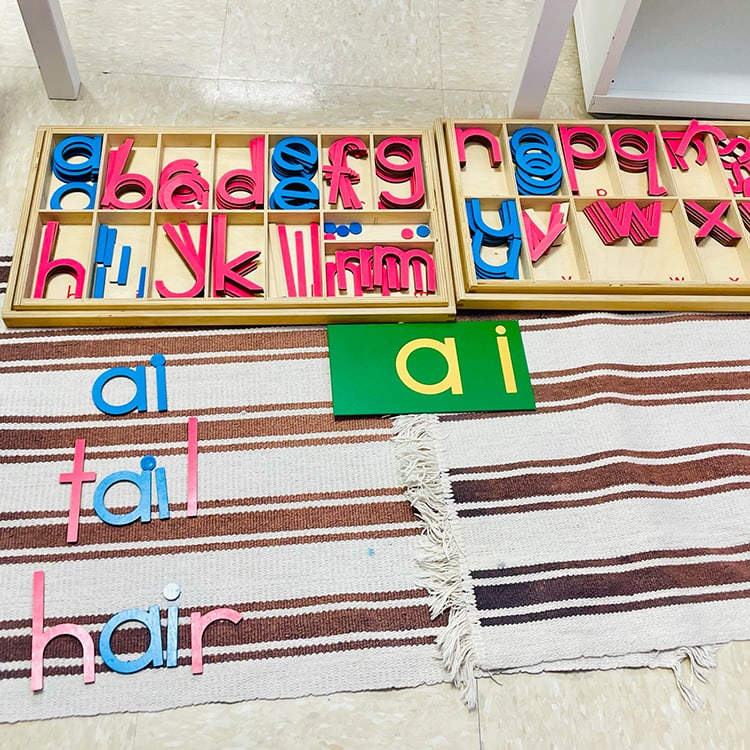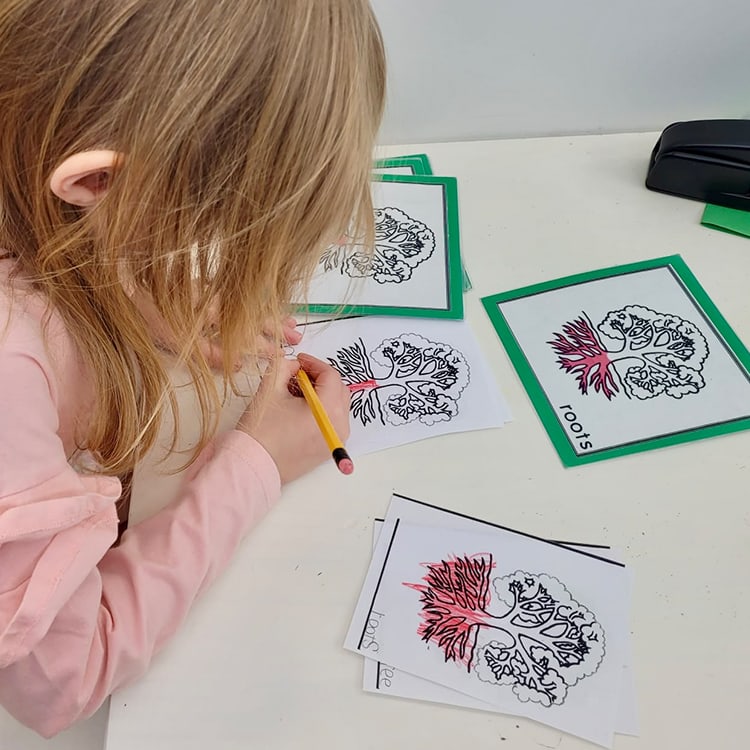Circle time holds a special place within the Montessori approach, serving as a pillar for fostering community, enhancing social development, and nurturing independence.
Montessori, an educational philosophy developed by Dr. Maria Montessori, aims to create spaces where children thrive emotionally, socially, and academically. Circle time aligns with these goals by offering a deliberate opportunity for collective learning, sharing, and interaction. This shared time creates a calm and focused atmosphere that helps set the tone for the day, reinforcing consistent routines and nurturing a love of learning.
Circle time provides a safe and nurturing space where every child feels valued and empowered as part of a collective whole.
The Purpose of Circle Time
Circle time usually refers to a communal gathering where children engage in group activities, songs, stories, and discussions. There are variations of this philosophy across the world, in preschools and Montessori schools alike.
Although not originally conceived by Maria Montessori, circle time has become a staple in many Montessori classrooms due to its adherence to central Montessori philosophy. Historically, Montessori schools had a more individualized ‘line time’ where children would walk in a precise line, focusing on grace and courtesy and developing coordination. However, as Montessori education evolved, the more social and interactive ‘circle time’ was adopted.
The shift aimed to foster a sense of community, provide opportunities for shared learning experiences, and accommodate the natural human desire for group connection, while still incorporating Montessori principles of respect, observation, and purposeful activity within the group setting.
More than a class activity, circle time is an opportunity to foster a sense of belonging, connect with others, and build critical social and emotional skills.
Known for its holistic approach, the Montessori philosophy emphasizes life skills alongside academics, and circle time is one of the most effective forums to reinforce this philosophy.
Building Community Through Collaboration
At its heart, circle time is about creating a sense of community.
Since Montessori classrooms are multi-age environments where older children mentor younger ones, circle time is an excellent opportunity for children to participate in shared discussions and group activities. The setup encourages mutual respect and cooperation, two values deeply rooted in Montessori education.
Children sit in a circle, symbolizing equality and inclusivity, so no person dominates the space. The circle arrangement teaches children to listen, take turns, and express themselves confidently, preparing them for collaboration in broader aspects of life.
Reinforcing Montessori Principles
Circle time effectively integrates Montessori principles, such as independence, respect for others, and freedom within a structured environment. During these sessions, educators guide children subtly rather than directly.
- Independence: Encourage children to lead tasks, such as morning greetings, singing songs, or sharing weather updates.
- Respect: Emphasize active listening by valuing every child’s voice. Children learn to appreciate the diverse perspectives of their peers.
- Freedom within limits: While circle time follows a general structure, encourage children to participate in ways that feel natural to them, allowing creative expression.
A Holistic Approach to Development
Through structured conversations and group interaction, circle time supports children’s developing cognitive abilities and emotional resilience. These sessions align with key Montessori goals, including fostering self-discipline, encouraging meaningful learning, and cultivating emotional awareness.
What Happens During Circle Time?
The magic of circle time lies in its thoughtful design. Far from being rigid or mundane, these sessions are tailored to the developmental needs of the children, ensuring that every child feels engaged and valued.
How Often Does Circle Time Occur?
In a Montessori classroom, circle time typically occurs once or twice a day, in the morning and afternoon.
The morning circle sets the tone for the day, creating a sense of routine and grounding. An afternoon circle provides a moment to reflect on the day’s events or share personal experiences, making it a great way to end the day in classrooms with extended hours.
The frequency offers children multiple touchpoints to connect, learn, and grow while maintaining balance with other types of individual exploration, which are central to Montessori education.
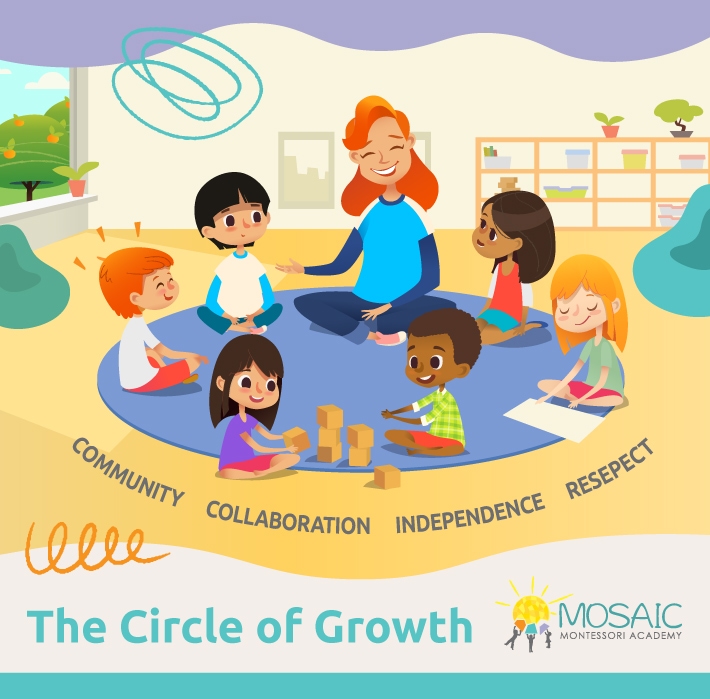
How Long Are Circle Sessions?
Circle time is anything but a rigid gathering. Its duration depends on the age group and their attention spans.
A circle time session for younger children may last 10 to 15 minutes to maintain their focus. Older children may enjoy sessions of 20 to 30 minutes as they engage in deeper discussions and collaborative ideas.
The flexibility of these timeframes respects each child’s developmental stage, upholding Montessori’s child-centred approach.
Activities in Circle Time
Circle time activities are engaging and versatile, encouraging participation while cultivating key developmental skills. Some activities might include:
- Greetings and warm-ups: Set a welcoming atmosphere with greetings, welcome songs, or simple stretching exercises to energize the classroom.
- Theme-based discussions: Teachers can introduce topics that align with current lessons, community events, or cultural holidays. For example, they might discuss the changing seasons during autumn to deepen children’s connection with nature.
- Storytelling: Stories spark imagination and teach moral lessons while building listening and comprehension skills.
- Movement and music: Circle time often incorporates songs, rhythm exercises, or role-playing, blending creativity with skill-building.
- Group games: Games facilitate teamwork, problem-solving, and motor skill development.
- Sharing time: Encourage children to share personal anecdotes or objects, nurturing confidence and communication skills.
Connecting ideas, topics, interests, and knowledge is at the heart of lifelong learning.
Why Circle Time Matters
Circle time provides children with meaningful opportunities to connect, learn, and grow in a communal setting.
Strengthening Social Skills
The group setting enables children to connect with their peers through shared experiences. They learn patience, empathy, and the art of turn-taking, alongside skills like negotiating group decisions.
A Montessori classroom thrives on these peer relationships, and circle time is often the starting point for these interactions.
Preparing Children for Future Collaboration
Circle time serves as a microcosm of larger societal interactions, equipping children to thrive beyond the school environment.
Children are better prepared for collaboration in adulthood by practicing frameworks such as active listening and respectful communication.
Promoting Emotional Awareness
Through consistent participation in circle time, children become skilled at recognizing their own emotions and those of their peers.
Their emotional intelligence fosters self-awareness and strengthens their capacity for meaningful relationships.
Discover the Circle of Growth at Mosaic Montessori Academy
Circle time is not just a tradition; it embodies the philosophy of inclusivity, independence, and respect that is central to Montessori education. At Mosaic Montessori Academy, these values come alive during every circle time session, nurturing children into confident, compassionate, and capable members of the community.
Our child-centred approach means every activity during circle time has a purpose, from cultivating lifelong skills to building a sense of community.
Connect with Mosaic Montessori Academy and learn how a holistic educational environment can shape your child’s future.
